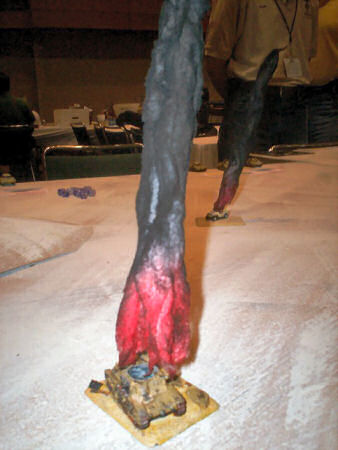Once the pristine gear is painted, the whole mini is weathered at once, to make sure that it has a uniformly-dirty finish.

First, and simplest, a medium wash of dark brown is applied all over. Here I'm using two-parts Citadel black ink, one-part Citadel chestnut ink, and three-parts water. I've experimented using a tiny amount of liquid soap in washes, but concluded that it doesn't really help much at this scale, and can sometimes push the wash out of the recesses, which is the last thing we want.
The wash serves both to shade the surfaces and to line the deep recesses. If I was going for a clean out-on-parade look, I'd wait for it to mostly-dry, and take a cotton-wool bud damp with ammonia-based window cleaner to it, to clean up the flat surfaces but leave the lines.

This is my absolute favourite part - pastel shading. Here I'm using MIG's excellent pigments - a 60/40 mix between Black Smoke and Industrial City Dirt, as it goes - but for the less lazy and/or more economically inclined, it's of course perfectly feasible to use ground chalk-art-pastel instead. Either way, it gets on your desk, it gets on your fingers, it gets on your clothes... ![]()

The pigment powder is applied into the recesses and edges with a brush, as shading - after dappling it into the areas I want shaded, I'll take a dry tissue, and wipe lightly over the figure to clear it away from the raised areas and let some of the paint back through. This stage serves to dull the previous shininess a little, and provide some more natural weathering; pastel shading gives the impression of rubble dust, engine smoke, blast soot, and so on a lot better than ink washes ever could.











